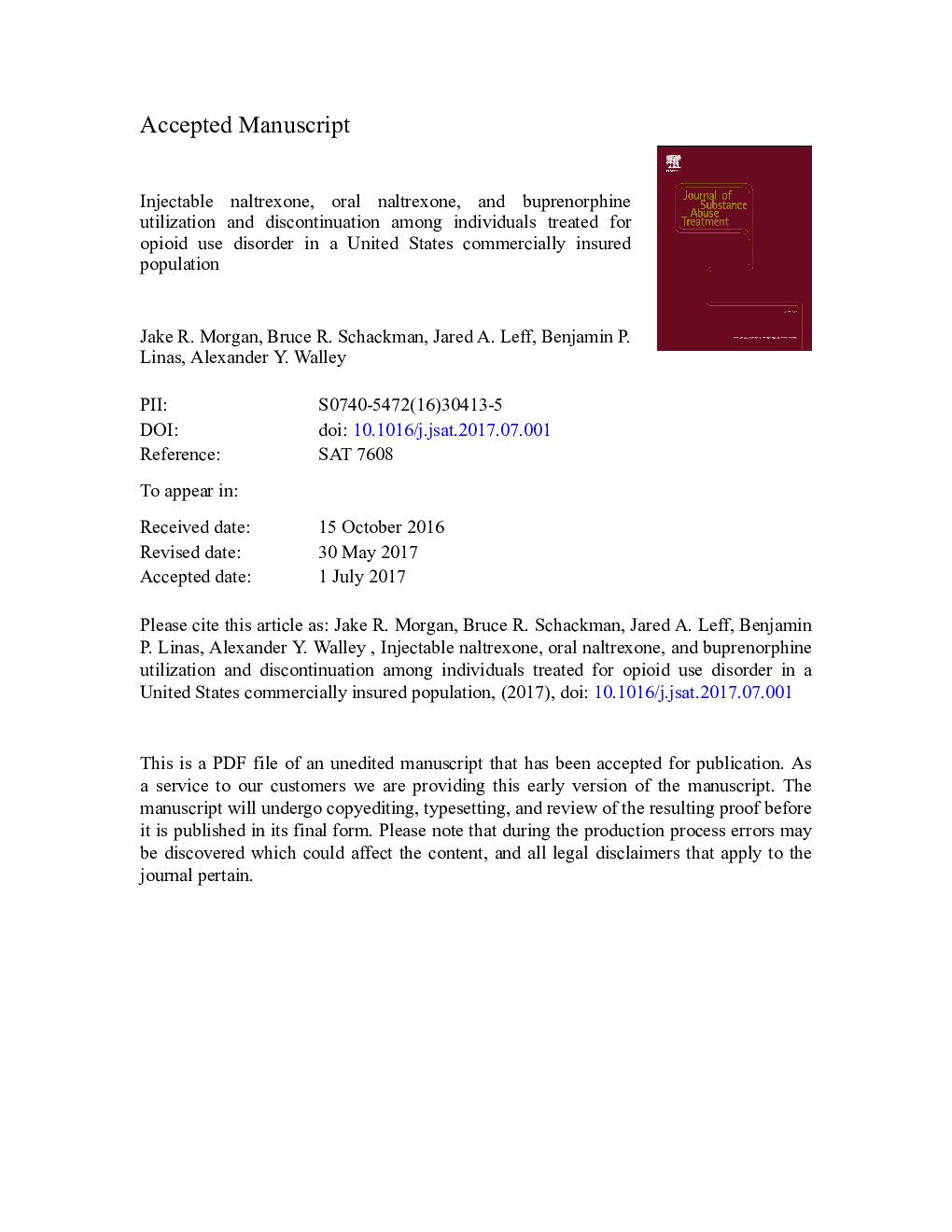| Article ID | Journal | Published Year | Pages | File Type |
|---|---|---|---|---|
| 6801913 | Journal of Substance Abuse Treatment | 2018 | 31 Pages |
Abstract
This analysis demonstrates that the use of evidence-based medication therapies has not kept pace with increases in OUD diagnoses in commercially insured populations in the United States. Among those who have been treated, discontinuation rates >Â 30Â days after initiation are high. The proportion treated with injectable naltrexone, oral naltrexone, and transdermal buprenorphine grew over time but remains small, and the discontinuation rates are higher among those treated with these medications compared with those treated with sublingual or oralmucosal buprenorphine/naloxone. In the face of the opioid overdose and addiction crisis, new efforts are needed at the provider, health system, and policy levels so that MOUD availability and uptake keep pace with new OUD diagnoses and OUD treatment discontinuation is minimized.
Keywords
Related Topics
Life Sciences
Neuroscience
Biological Psychiatry
Authors
Jake R. Morgan, Bruce R. Schackman, Jared A. Leff, Benjamin P. Linas, Alexander Y. Walley,
